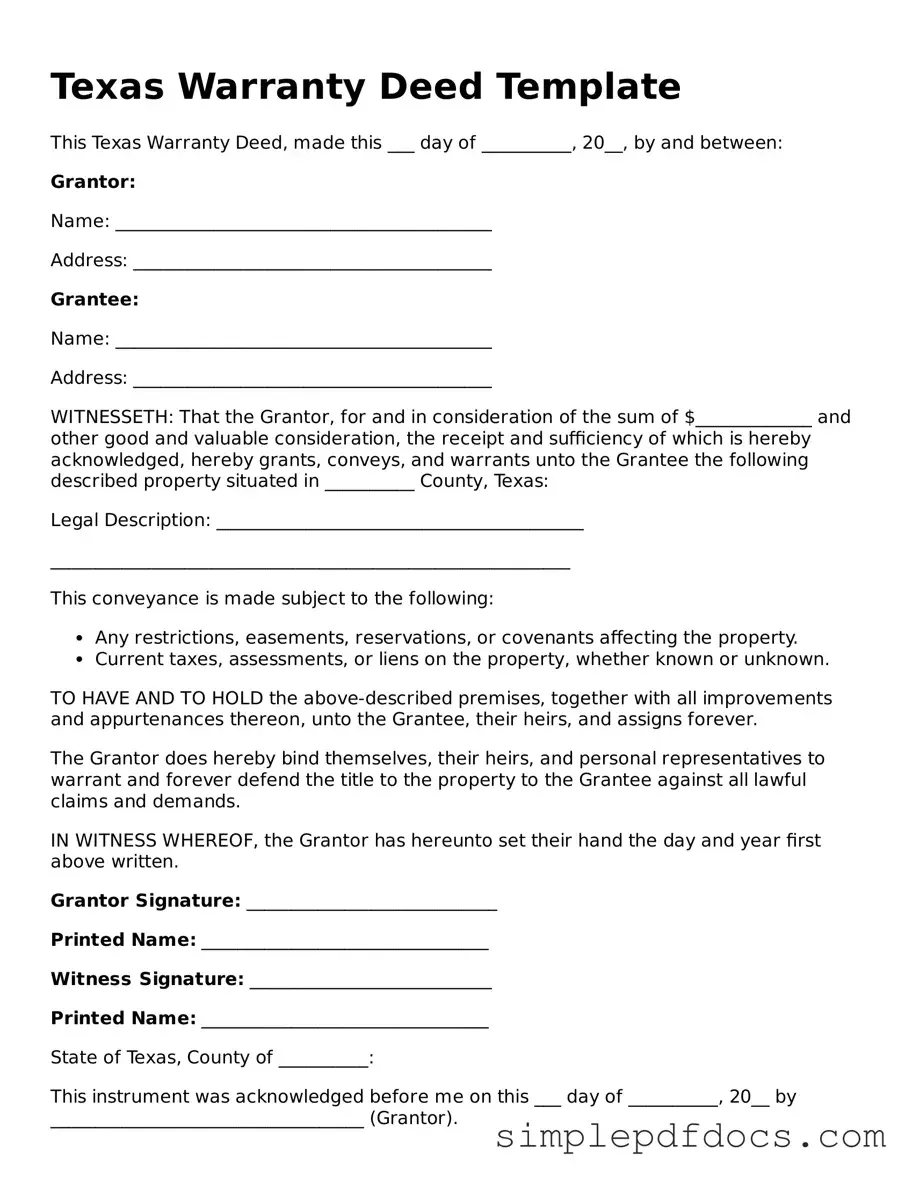The Texas Deed form serves as a crucial document in real estate transactions within the state, facilitating the transfer of property ownership. This form outlines the essential details of the transaction, including the names of the grantor and grantee, a description of the property, and any specific terms of the transfer. It typically includes a legal description of the property, which is vital for identifying the exact parcel being conveyed. Additionally, the form may specify any encumbrances or restrictions that may affect the property. Understanding the various types of deeds available in Texas, such as warranty deeds and quitclaim deeds, is essential for both buyers and sellers. Each type serves a different purpose and offers varying levels of protection regarding the title. Completing the Texas Deed form accurately is imperative, as errors or omissions can lead to disputes or delays in the transfer process. Proper execution and notarization of the deed are also necessary to ensure its validity and enforceability. In essence, the Texas Deed form is more than just a piece of paper; it is a vital instrument that safeguards property rights and provides clarity in real estate transactions.
